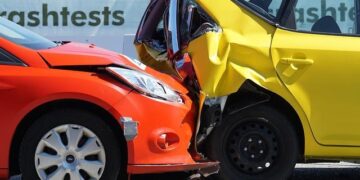Table of Contents
For 15 years, I’ve managed fleets.
I’ve interviewed drivers, purchased trucks, scheduled maintenance, and tracked just about every metric you can imagine.1
And for most of that time, there was one event I dreaded more than a surprise DOT audit or a full-yard breakdown on a Monday morning: the annual insurance renewal.
It was a soul-crushing ritual.
I’d spend weeks gathering paperwork, filling out forms, and highlighting our safety programs, only to be handed a premium increase that felt completely disconnected from all our hard work.
My team and I were doing everything by the book.
We hired drivers with clean Motor Vehicle Records (MVRs).
We ran safety meetings.
We kept our trucks meticulously maintained.
Yet, year after year, the cost climbed, driven by forces that felt utterly beyond my control—things the brokers called “social inflation,” “nuclear verdicts,” and rising repair costs.3
I was being told to cut costs everywhere else, but this one line item on my budget was a runaway train, and I felt powerless to stop it.4
The tipping point came on a Tuesday.
I got a call about a major, at-fault accident involving one of my best drivers—a guy with a spotless record, ten years on the job.
The direct costs were staggering, but the real blow came a few weeks later: a non-renewal notice from our carrier.
We were suddenly staring down the barrel of being uninsurable.
How could this happen? We had followed all the standard advice, but our “perfect” driver had a catastrophic failure.
It forced me to ask a terrifying question: “What are we missing?”
The answer, strangely enough, didn’t come from a trucking conference or an industry report.
It came from the world of public health.
I stumbled upon a new way of thinking that transformed my role from a reactive manager constantly fighting insurance fires to a proactive “Chief Health Officer” of my fleet.
It gave me a framework to not just manage risk, but to diagnose its root causes and systematically cure the “disease” within my operation.
The Epiphany: Your Fleet Isn’t a Garage, It’s a Population
My breakthrough came when I started reading about epidemiology, the science of how diseases spread through populations.6
Epidemiologists don’t just treat sick individuals; they study the entire group to figure out who gets sick, where they get sick, and why.
They look for patterns, determinants, and risk factors that are invisible when you only focus on one person at a time.7
Suddenly, it all clicked.
I had been managing my fleet like a garage—a collection of individual assets (trucks) and employees (drivers).
When one broke down or had an accident, I’d fix it, discipline the driver, and move on.
It was a reactive model that only ever treated the symptoms.
The new paradigm was to see my fleet as a population—a dynamic system where drivers and vehicles interact with their environment (routes, schedules, weather) and are constantly exposed to “risk pathogens.” Accidents, claims, and losses weren’t just bad luck; they were the symptoms of an underlying disease spreading through my fleet.
Why the Old Model Fails
This shift in perspective revealed why my old approach was doomed to fail.
We were spending a fortune on insurance policies—Primary Liability, Motor Truck Cargo, Physical Damage, Bobtail, Non-Trucking Liability—all the standard coverages.9
But these policies are like a medicine cabinet full of painkillers.
They help manage the financial pain
after an injury, but they do nothing to prevent the injury from happening in the first place.
We had all the right “medicines,” but our fleet kept getting sick because we had never properly diagnosed the illness.
What I came to understand is that the insurance industry already operates on these principles.
Actuarial science is a form of epidemiology.
Insurers analyze massive populations of fleets to predict losses and set premiums.3
They group you with thousands of others based on broad factors like your industry and location, and your individual efforts can get lost in the noise.
By adopting this framework for my own fleet, I could conduct a “micro-study” of my own population.
I could identify and mitigate risks with a precision their broad models could never achieve, allowing me to prove that my fleet was a healthier, lower-risk population that deserved better rates.
Descriptive Epidemiology: Mapping the “Disease” in Your Fleet
The first job of an epidemiologist is to describe the distribution of a disease.
They ask three simple but powerful questions: Who is getting sick? Where are they getting sick? And when?.7
I stopped looking at accidents as isolated incidents and started looking for patterns.
I became a data detective, systematically mapping my fleet’s risk profile.
Pillar 1: Person (The “Who” of Your Fleet’s Risk)
A clean MVR is just a starting point; it’s a lagging indicator that tells you about a driver’s past, not their future risk.
I needed to look at the patterns across my entire driver population.
- Driver Experience and Demographics: I analyzed incident rates against factors like age, years with our company, and total commercial driving experience. Were newer drivers having more close calls? Were drivers nearing retirement showing signs of fatigue?.12
- Behavioral Data: This was the game-changer. Using telematics, I could finally see what was happening between incidents. I started tracking patterns of speeding, harsh braking, and rapid acceleration. I wasn’t looking to punish, but to understand. Who were my top 10% of harsh brakers? Was there a correlation between those events and minor fender-benders or tire damage? This data became my microscope.14
- Training History: I cross-referenced incident data with our training logs. Was there a measurable difference in the safety records of drivers who had recently completed a defensive driving course versus those who hadn’t?.3
Pillar 2: Place (The “Where” of Your Fleet’s Risk)
An accident report might say an incident happened on “I-95,” but that’s not specific enough.
Using GPS and telematics data, I started building a true risk map of our operations.
- Route Analysis: I mapped every harsh braking event, every speeding alert, and every incident onto our routes. It became clear that certain stretches of highway, specific intersections, and particular customer sites were “hotspots” for risk.18
- Location-Specific Hazards: A surprising number of our minor scrapes and damages weren’t happening on the open road, but at specific loading docks or even in our own yard. This pointed to environmental hazards we could address, like poor lighting or tight turning radii.
- Geographic Variation: We confirmed that our urban routes had a higher frequency of minor incidents, while our long-haul rural routes had fewer incidents, but they were more severe. This allowed us to tailor our training and vehicle specifications to the environment.11
Pillar 3: Time (The “When” of Your Fleet’s Risk)
Finally, I analyzed the clock and the calendar.
Risk is not evenly distributed throughout the day, week, or year.
- Time of Day: We discovered a spike in incidents between 2 PM and 4 PM. This wasn’t just rush hour; it was the post-lunch slump when fatigue sets in.
- Day of Week: Fridays were our worst day for incidents, suggesting end-of-week pressure and distraction were major factors.
- Point in Shift: A disproportionate number of events occurred in the last two hours of a driver’s shift, a clear signal of fatigue and a direct link to Hours of Service (HOS) management.2
- Seasonality: We saw predictable spikes in winter due to weather, but also in late spring when road construction season began in earnest.8
The real power wasn’t in any single pillar, but in layering them.
I didn’t just find that “newer drivers” were a risk.
I found that “newer drivers on the downtown delivery route (Place) between 2 PM and 4 PM (Time)” were the absolute epicenter of our risk problem.
This level of specificity transformed our approach from generic safety meetings to hyper-targeted, effective interventions.
Analytic Epidemiology: Uncovering the Root Causes (Determinants) of Your Risk
After mapping the what, where, and when, the next step was to uncover the why.
In epidemiology, these root causes are called “determinants”.7
Why were newer drivers struggling on that route at that time? This is where I moved from being a data detective to a true diagnostician.
I started categorizing the potential causes of our fleet’s “illness.”
- Behavioral Determinants: These are the direct actions of our drivers. Using telematics and dash cam footage, we could see the risky behaviors that were previously invisible, like distracted driving, tailgating, and consistent failure to use turn signals.3 We also identified compliance failures, like missed pre-trip inspections or patterns of pushing HOS limits, which were precursors to bigger problems.5
- Mechanical/Vehicle Determinants: We analyzed the health of our assets. Heavier, specialized trucks naturally carried more risk, but we also found that our older vehicles with fewer advanced safety features were overrepresented in certain types of collisions.18 We established a clear correlation between deferred maintenance and costly on-road breakdowns, which not only increased repair costs but also created accident risks.17
- Environmental & Operational Determinants: This was the most overlooked category. We looked at the context we were asking our drivers to operate in. The type of cargo mattered—hauling hazardous materials required a different level of diligence.13 More importantly, we identified internal operational pressures. Unrealistic schedules and intense pressure for on-time delivery were forcing drivers to cut corners and take risks. These were the hidden pathogens in our system that were making our drivers “sick”.22
To put this all together, I created a diagnostic tool to systematically move from observation to action.
Table 1: The Fleet Epidemiologist’s Risk Diagnosis Matrix
| Observed Pattern (from Part 2) | Hypothesized Determinant(s) | Data Source for Verification | Potential Intervention (links to Part 4) |
| Spike in harsh braking events at the Main St. & 1st Ave. intersection. | Poor signal timing (Environmental), Following too closely (Behavioral). | Telematics data, Driver interviews, Site visit. | Coach drivers on following distance, Petition city for signal review. |
| High rate of minor backing incidents among drivers with <1 year experience. | Inadequate backing training (Operational), Poor visibility in older trucks (Mechanical). | Training records, Vehicle specs, Incident reports. | Implement enhanced backing skills module, Prioritize newer trucks for junior drivers. |
| Increase in speeding violations on Route 80 in the final 2 hours of shifts. | Driver Fatigue (Behavioral), Pressure to complete route (Operational). | HOS logs, Telematics speed data, Dispatch records. | Review route timing for feasibility, Implement fatigue management training. |
This matrix became our central nervous system for risk management.
It transformed us from being passive consumers of data to active investigators, creating a clear and logical path from analysis to action.
Intervention & Control: Your Fleet’s Public Health Program
With a clear diagnosis, it was time to prescribe the treatment.
I structured our action plan using the three-tiered public health prevention model, which gave us a strategic and comprehensive way to improve our fleet’s health.24
Tier 1: Primary Prevention (Preventing the “Disease” Before It Starts)
This is the most important tier.
The goal here is to eliminate the root causes and stop incidents before they can ever happen.
- Targeted Driver Training: We threw out our generic annual safety videos. Using our data, we created specific training modules. We had a session on proper following distance for drivers with high rates of harsh braking. We developed a route-specific hazard guide for the downtown delivery route that was causing so many problems.3
- Proactive Maintenance: We moved from a reactive to a predictive maintenance schedule. By analyzing fault codes and vehicle performance data, we could address issues before they led to a breakdown or a safety failure on the road.17
- Route & Schedule Optimization: We re-evaluated the routes and schedules we had identified as high-risk. In one case, we simply changed the delivery window for a customer by one hour, completely avoiding the school zone traffic that was causing constant stress and near-misses.23
Tier 2: Secondary Prevention (Catching the “Disease” Early to Reduce Severity)
This tier focuses on identifying and correcting risky behaviors in real-time, turning a potential accident into a coaching moment.
- Real-Time Coaching: Our dash cams and telematics systems became our early-detection tools. An event-triggered video of a driver rolling through a stop sign wasn’t a “gotcha” moment for discipline; it was an immediate opportunity for a calm, constructive coaching conversation. We were catching the “disease” in its earliest stages.14
- Regular Fleet “Health” Check-ins: We implemented monthly driver performance reviews based on their safety data. These became positive, collaborative sessions focused on continuous improvement.
Tier 3: Tertiary Prevention (Minimizing the Impact of the “Disease”)
When an incident does occur, the goal is to manage the outcome to minimize the financial and operational damage.
- Robust Post-Accident Protocol: We trained every driver on a clear, step-by-step process to follow after an incident. This ensured we collected all the necessary information to manage the claim effectively.
- Proactive Claims Management: We stopped just handing claims over to the insurer. We became active partners in the process, working to control costs, challenge inflated repair quotes, and get our vehicles back in service faster. This directly reduced the severity component of our loss history.3
- Closing the Loop: Every single incident, no matter how minor, was fed back into our epidemiological model. It became another data point that helped us refine our understanding of the risks in our population.
This tiered program did more than just improve our safety; it fundamentally changed our relationship with our insurance provider.
Instead of just showing up at renewal time with a year’s worth of bad news, we were in proactive communication with our underwriter throughout the year.
We could demonstrate, with data, the specific public health program we were running and how it was actively reducing both the frequency and severity of risk in our fleet.
From Uninsurable Risk to A-Rated Partner
After receiving that non-renewal notice, we spent the next 18 months rigorously implementing this epidemiological framework.
The results were astounding.
We reduced our claims frequency by 40% and cut the average cost per claim by 25%.
We had the data to prove it.
At our next renewal, the conversation was completely different.
We weren’t just insurable; we had multiple A-rated carriers competing for our business.
We ultimately secured a policy with better coverage for a 30% lower premium than our previous plan.
The most profound change, however, was in my own mindset.
I learned that insurance premiums are not a fixed cost to be endured; they are a variable outcome that can be controlled.
By shifting from a reactive “garage manager” to a proactive “Chief Fleet Health Officer,” I finally gained control over my fleet’s destiny.
I could diagnose our unique risks, prescribe a targeted cure, and build a resilient, profitable, and—most importantly—safe operation.
The fires were out because we had finally eliminated the fuel.
Works cited
- Fleet Manager Guide: Responsibilities, Skills & Career Path – Fleetio, accessed August 17, 2025, https://www.fleetio.com/blog/your-complete-guide-to-being-a-fleet-manager
- What is a fleet manager – role and responsibilities – Motive, accessed August 17, 2025, https://gomotive.com/guides/fleet-management/fleet-manager-responsibilities/
- Commercial Auto Fleet Insurance Whats Driving Costs and How to …, accessed August 17, 2025, https://www.assuredpartners.com/news-insights/blogs/risk-management/2025/commercial-auto-fleet-insurance-whats-driving-costs-and-how-to-take-control/
- Top Fleet Management Challenges – Thompson Truck Source, accessed August 17, 2025, https://thompsontrucksource.com/blog/fleet-management-challenges/
- Fleet Managers: How to Overcome Most Common Pain Points, accessed August 17, 2025, https://summitfleet.com/blog/attention-fleet-managers-overcome-common-pain-points/
- Principles of Infectious Disease Epidemiology – PMC – PubMed Central, accessed August 17, 2025, https://pmc.ncbi.nlm.nih.gov/articles/PMC7178878/
- Principles of Epidemiology | Lesson 1 – Section 1 – CDC Archive, accessed August 17, 2025, https://archive.cdc.gov/www_cdc_gov/csels/dsepd/ss1978/lesson1/section1.html
- Basic Principles of Epidemiology – Public Health – Merck Veterinary Manual, accessed August 17, 2025, https://www.merckvetmanual.com/public-health/principles-of-epidemiology/basic-principles-of-epidemiology
- The ultimate guide to truck and fleet insurance. | Motive, accessed August 17, 2025, https://gomotive.com/blog/commercial-fleet-insurance-ultimate-guide/
- Commercial Truck Insurance | GEICO, accessed August 17, 2025, https://www.geico.com/commercial-auto-insurance/truck-insurance/
- How Are Commercial Auto Insurance Premiums Calculated? | Insureon, accessed August 17, 2025, https://www.insureon.com/small-business-insurance/commercial-auto/how-premiums-are-calculated
- How is My Commercial Auto Insurance Premium Determined? – Kemper, accessed August 17, 2025, https://cloud.kemper.com/en/resources/insurance-insights/how-is-my-commercial-auto-insurance-premium-determined
- Truck Insurance Calculator, accessed August 17, 2025, https://www.truckinsurancenitic.com/truck-insurance-calculator.html
- What is fleet insurance? A guide to how fleet coverage works to protect vehicles – Geotab, accessed August 17, 2025, https://www.geotab.com/blog/fleet-insurance/
- Fleet Insurance Costs: What It Costs Businesses to Insure Their Company Cars – Cardata, accessed August 17, 2025, https://cardata.co/blog/fleet-insurance-costs/
- How do you deal with these fleet management challenges? : r/Truckers – Reddit, accessed August 17, 2025, https://www.reddit.com/r/Truckers/comments/1lj5d42/how_do_you_deal_with_these_fleet_management/
- 6 Tips to Help Manage Your Fleet Insurance Costs – Fleetio, accessed August 17, 2025, https://www.fleetio.com/blog/fleet-insurance-costs
- 4 Factors That Impact Your Fleet Insurance Premium, accessed August 17, 2025, https://www.wceins.com/4-factors-that-impact-your-fleet-insurance-premium-2/
- How Much Is Truck Insurance? | Progressive Commercial, accessed August 17, 2025, https://www.progressivecommercial.com/commercial-auto-insurance/truck-insurance/commercial-truck-insurance-cost/
- Fleet Insurance Cost Guide: Navigating Premiums & Choices – Spring Free EV, accessed August 17, 2025, https://springfreeev.com/fleet-insurance-cost/
- 11 Fleet Management Challenges & Solutions | Linxup, accessed August 17, 2025, https://www.linxup.com/blog/fleet-management-challenges
- Understanding the Basics of Fleet Insurance – Simply Fleet, accessed August 17, 2025, https://www.simplyfleet.app/blog/what-is-fleet-insurance
- The Top 7 Challenges Faced by Fleet Managers – MICHELIN Connected Fleet, accessed August 17, 2025, https://connectedfleet.michelin.com/blog/the-top-5-challenges-faced-by-fleet-managers/
- Epidemiology of Diseases Frameworks | Health Knowledge, accessed August 17, 2025, https://www.healthknowledge.org.uk/public-health-textbook/disease-causation-diagnostic/2b-epidemiology-diseases-phs/framework






